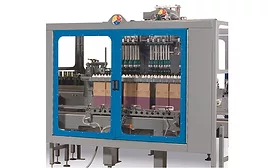Home » packaging trends
Articles Tagged with ''packaging trends''
Product positioning vital for packaging design
Read More
Packaging trends drive flexibility in case packers and wrappers
Beverage equipment suppliers offer flexible, fast case packers and wrappers
March 15, 2016
U.S. demand for pouches to exceed $10 billion, The Freedonia Group states
Food and beverage markets comprise majority of demand
March 8, 2016
Can filling, seaming equipment need grows as packaging trends move toward cans
Craft beer industry, varying can styles drive innovation
January 15, 2016
Personalized packaging grows in beverage industry
Customization, innovation grows due to demand
June 15, 2015
Talking Rain Beverage Co. adds cans to package offerings
Company offers slim cans in fridge packs
May 15, 2015
Convenience, portability affect packaging selection
Cartons, pouches and aseptic containers appeal to different consumer need states
October 16, 2013
Elevate your expertise in the beverage marketplace with unparalleled insights and connections.
Join thousands of beverage professionals today. Shouldn’t you know what they know?
JOIN NOW!Copyright ©2025. All Rights Reserved BNP Media.
Design, CMS, Hosting & Web Development :: ePublishing




